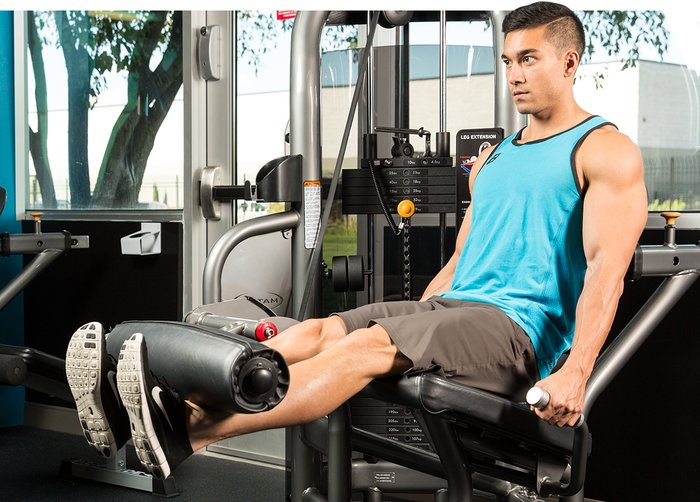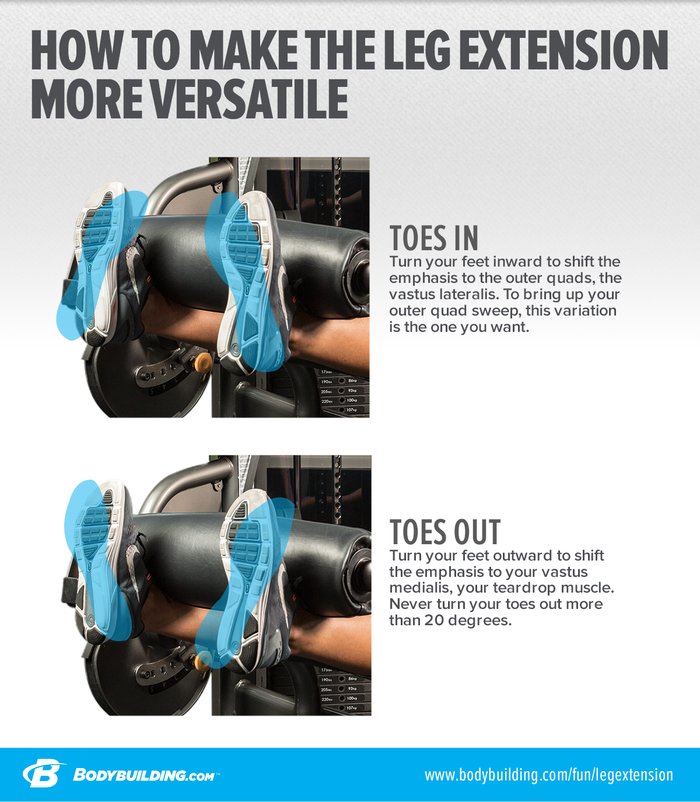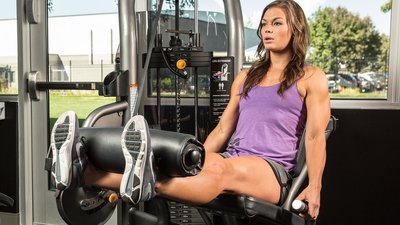I've never been a big fan of the leg extension as a major mass builder, except for those workouts when my thighs are quivering and I can barely walk from fatigue—and yet I'm still not done with training. It surely beats doing another set of walking lunges, where the lightest breeze can practically knock me over, given how fried my legs are.
But when a standing move is out of the question, this single-joint quad killer can pack a punch.
Technically known as a seated knee extension, this movement focuses on stimulation of the four quad muscles: the vastus medialis (aka, inner quad or teardrop), the rectus femoris, the underlying vastus intermedius, and the outermost vastus lateralis.
As far back as 1999, Per Tesch, PhD, in his book "Target Bodybuilding," showed how magnetic resonance imaging (MRI) could be used to determine the degree of activation in the various quad muscles. His research determined that the leg extension hit them all heavily and fairly evenly with the feet pointed straight.[1] But Tesch's research didn't just suggest what parts of the muscle were hit and to what degree—heavy, moderate, or none at all—it also measured what would happen if a lifter made slight variations to the movement, like turning the toes inside or out.
The answers were of interest to bodybuilders everywhere looking to increase their inner quad (teardrop) or outer quad (sweep).

Leg extensions are normally done with your feet straight, but that's not the only variation you can do.
With Toes In
By turning the toes inward as far as possible, the muscular emphasis shifted away from the inner vastus medialis and the rectus femoris, while the vastus intermedius and outer vastus lateralis were left to carry the bulk of the load.[1]
With Toes Out
Conversely, with the toes pointed in the opposite direction (outward), the stimulation was nearly reversed: The vastus lateralis fell off to just moderate usage, while the three other quad muscles scored heavy usage.[1]
Similar findings have been reported using electromyographic (EMG) data, with medial rotation (toes in) producing the greatest muscle activation for the vastus lateralis, and lateral rotation of the knee (toes out) producing the greatest activation of the rectus femoris.[2]

Simply turning the feet inward or outward when doing leg extensions offers trainees a few new ways to work their quads or bring up a lagging area.
Note: The leg extension is an open-chain movement, meaning your feet aren't pressed against a solid object, like a foot sled or the floor. This extreme foot positioning should not be attempted on closed-chain movements other than calves, as the knees can easily be adversely affected, especially when combined with heavy weights.
References
- Tesch, P. A. (1998). Target bodybuilding. Precision lifting for more mass and greater definition.
- Stoutenberg, M., Pluchino, A. P., Ma, F., Hoctor, J. E., & Signorile, J. F. (2005). The impact of foot position on electromyographical activity of the superficial quadriceps muscles during leg extension. The Journal of Strength & Conditioning Research, 19(4), 931-938.

